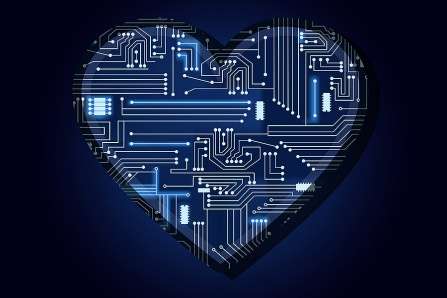New tech could prevent need to store non-working pacemakers inside the heart

Like conventional pacemakers, tiny new leadless pacemakers are designed to work for about 12 years.
But because these devices are placed inside the heart—as opposed to a cavity in the chest—tissue grows around them. As a result, retrieving these devices for a battery replacement might not always be possible. Instead, doctors may allow old pacemakers to pile up inside the heart while inserting new devices as needed.
There is no known danger associated with this practice, but Hooman Ansari, a PhD candidate at the University at Buffalo's School of Engineering and Applied Sciences, is working on a tidy solution.
Working under the supervision of M. Amin Karami, assistant professor in UB's Department of Mechanical and Aerospace Engineering and director of the Intelligent Dynamic Energy and Sensing Systems Lab (IDEAS Lab), Ansari and colleagues are developing a piezoelectric system that converts the heart's vibrational energy into electricity to power pacemakers.
The advancement, which would eliminate the need for pacemaker batteries, is described in papers published in the journals Smart Materials and Structures (May 2) and Journal of Intelligent Material Systems and Structures (May 17).
"What we're proposing would make receiving a pacemaker a one-and-done type procedure that could take as a little as 15 minutes," says Ansari. "In the United States alone, about 200,000 people receive battery replacements for their pacemakers every year. We could eliminate these procedures, saving the health care system untold amounts of money and limiting patient risk that occurs with these procedures."
Unlike conventional pacemakers, leadless pacemakers are about the size of an AAA battery. They are delivered via a catheter through the leg to the heart, where they regulate the heart beat and blood flow.
An initial device that the IDEAS Lab built and tested is roughly 1 centimeter cubed and shaped like the letter S. Results show it produces sufficient power (at least 10 microwatts) for heart rates from 20 to 100 beats per minute. It does not use magnetics, making it compatible with MRI machines.
A new device they are working on is even smaller. It's a piezoelectric strip, about a half-centimeter long, that's designed to buckle as it absorbs vibrational energy from the heart. Simulations suggest it will be capable of generating enough energy to power a heart rate up to 150 beats per minute.
The researcher's next step is to conduct physical experiments on the new device, and to develop a way to attach a backup power source to the device.
More information: MH Ansari et al. A sub-cc nonlinear piezoelectric energy harvester for powering leadless pacemakers, Journal of Intelligent Material Systems and Structures (2017). DOI: 10.1177/1045389X17708344
M H Ansari et al. Experimental investigation of fan-folded piezoelectric energy harvesters for powering pacemakers, Smart Materials and Structures (2017). DOI: 10.1088/1361-665X/aa6cfd
Provided by University at Buffalo

















